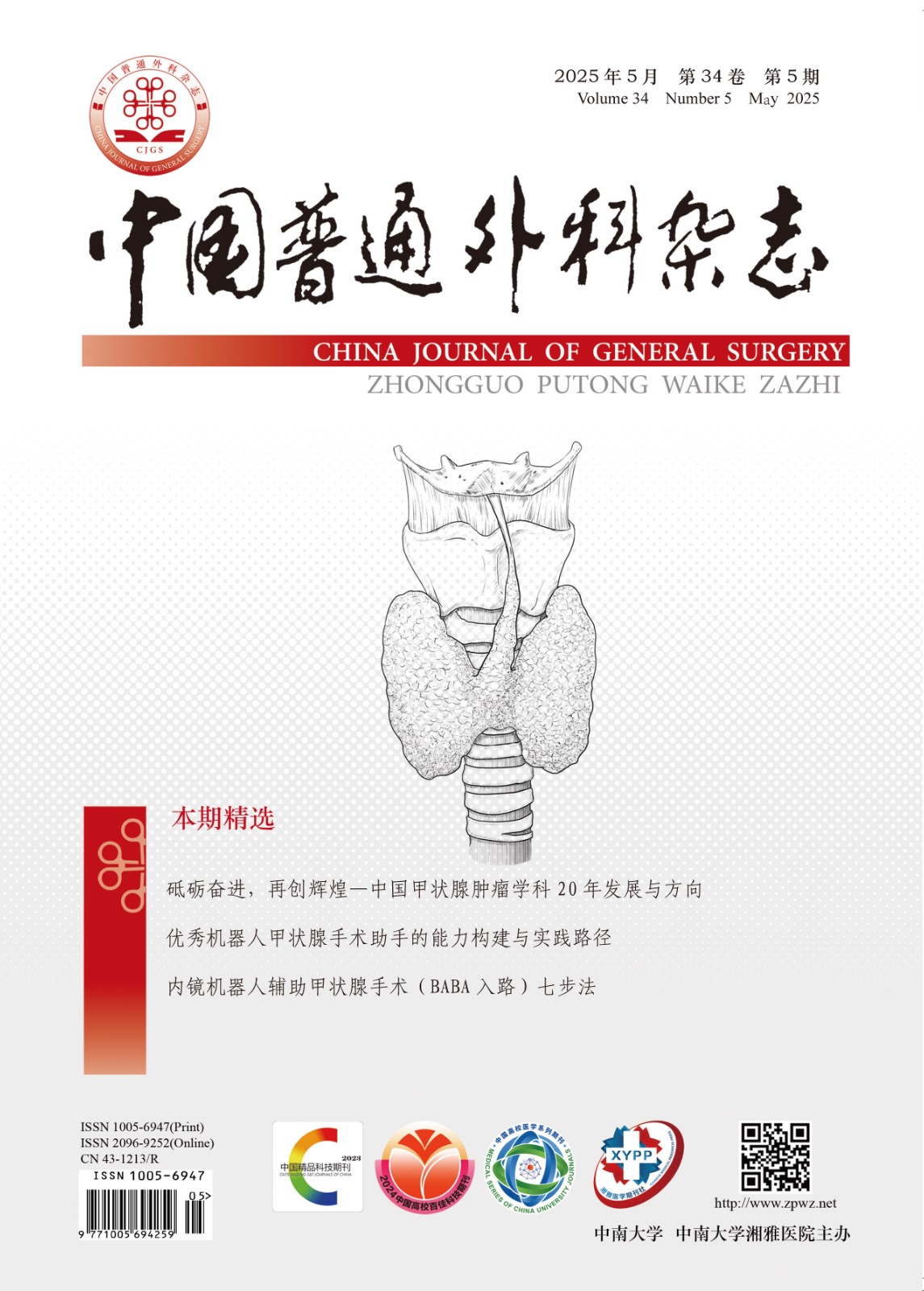Abstract:
Objective: To compare the incidence of recurrent laryngeal nerve (RLN) injury of precise thyroid lobectomy and subtotal thyroidectomy, and to assess the safety of precise thyroid lobectomy.
Methods: The clinical data of 249 patients with 438 affected thyroid sides undergoing precise thyroid lobectomy or subtotal thyroidectomy from January 2010 to June 2011 were retrospectively analyzed.
Results: Six cases of the whole group of patients had transient unilateral RLN palsy. The incidence of RLN injury of precise thyroid lobectomy and subtotal thyroidectomy was 1.38% (3/216 affected sides) and 1.35% (3/222 affected sides), respectively, and there was no statistical difference between the two procedures (P>0.05). No bilateral or permanent RLN injury occurred in any of the patients.
Conclusions: Precise thyroid lobectomy after improvements in technique, is as safe as subtotal thyroidectomy in terms of avoiding RLN injury.

